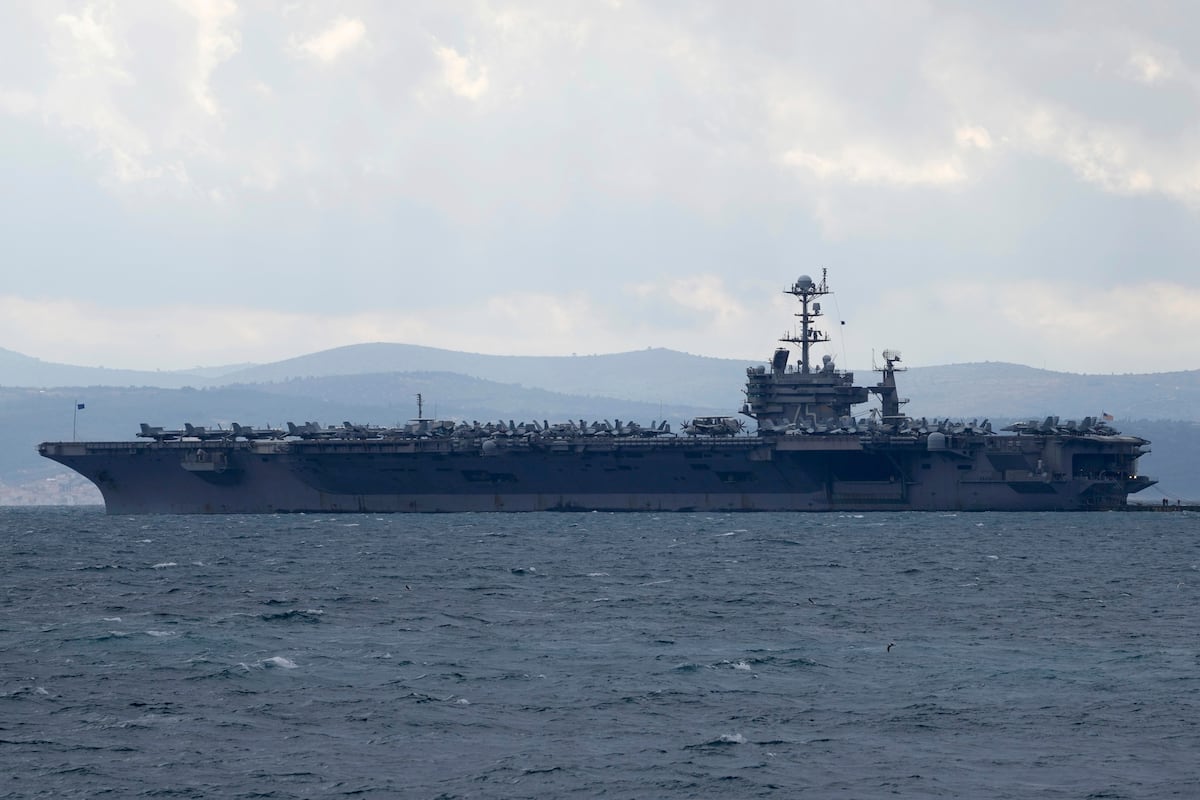Defense Secretary Pete Hegseth has ordered the aircraft carrier Harry S. Truman to remain in the Middle East for a second time, keeping it there another week so the U.S. can maintain two carrier strike groups in the region to battle Yemen-based Houthi rebels, according to a U.S. official.
In late March, Hegseth extended the deployment of the Truman and the warships in its group for a month as part of a campaign to increase strikes on the Iran-backed Houthis. The official said Hegseth signed the latest order Thursday and it is expected the Truman and its strike group warships will head home to Norfolk, Virginia, after the week is up.
Gen. Erik Kurilla, head of U.S. Central Command, requested that the Truman be extended again, according to officials. The San Diego-based aircraft carrier Carl Vinson and its strike group arrived in the region a few weeks ago and are operating in the Gulf of Aden. The Truman, along with two destroyers and a cruiser in its strike group, is in the Red Sea.
The officials spoke Friday on the condition of anonymity to discuss military operations.
The U.S. has increased its attacks on the Houthis, launching daily strikes since March 15, when President Donald Trump ordered a new, expanded campaign. He promised to use “overwhelming lethal force” until the Houthis stop their attacks on shipping in the Red Sea, a vital trade corridor.
According to Central Command, the U.S. has been waging an “intense and sustained campaign” against the Houthis. In a statement over the weekend, the command said the U.S. has struck more than 1,000 targets in Yemen since Operation Rough Rider began. It hasn’t provided details on the targets or how the data is compiled.
It has been rare in recent years for the U.S. to have two aircraft carriers in the Middle East at the same time. Navy leaders have generally been opposed to the idea because it disrupts ship maintenance schedules and delays time at home for sailors strained by the unusually high combat tempo.
If there are no additional extensions and the Truman and its warships leave the region next week, those sailors could be back home by next month.
Last year, the Biden administration ordered the aircraft carrier Dwight D. Eisenhower to remain in the Red Sea for an extended time as U.S. warships waged the most intense running sea battle since World War II. Prior to that, it had been years since the U.S. had committed that much warship power to the Middle East.
The Houthis had been waging persistent missile and drone attacks against commercial and military ships in the region in what the group’s leadership has described as an effort to end Israel’s war against Hamas in the Gaza Strip.
From November 2023 until this January, the Houthis targeted more than 100 merchant vessels with missiles and drones, sinking two of them and killing four civilian sailors. That has greatly reduced the flow of trade through the Red Sea corridor, which typically sees $1 trillion of goods move through it annually.
The group paused attacks in a self-imposed ceasefire until the U.S. launched a broad assault against the rebels in mid-March.
Read the full article here
